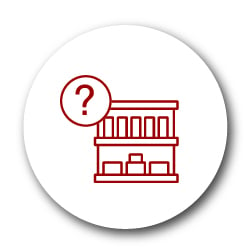When designing the space of your retail environment, be mindful of the placement and use of retail shelving. After all, your shelving has the ability to enhance the overall layout of your retail store and create an inviting environment for customers.
Now, there are numerous types of retail stores for which you can implement retail shelving. Before considering the questions you need to ask yourself, it is worth first understanding the different types. That’s so you can optimise the space available to you and not crowd your store or overwhelm your customer.
- Department store: This retail store is typically divided into sections for different categories.
- Supermarket: This retail store sells food products as well as household items that are arranged into their specific departments. Consumers that visit supermarkets are shopping with the intention to replenish their household inventory.
- Specialty store: Specialty stores have a narrow product assortment, their focus is placed on either one or two specific categories.
- Convenience store: As the name alludes to, this retail store provides convenience for customers by having stores in multiple locations and extended hours.
- Superstore or Hypermarket: These stores have countless variations of products ranging from economy to premium, therefore ensuring that they meet the needs of all customers. As a result, this establishment is described as having a complete market.
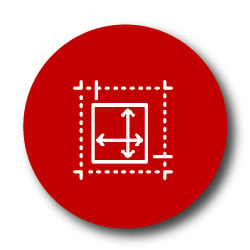
1. How much space do you have in-store?
The size of your store dictates how much space is available to work with. Thus, shelving you purchase should complement the size of your store.
For example, if you have a smaller store then the shelving purchased should be able to showcase your merchandise, while simultaneously not overwhelming your space.
It's worth noting when talking about spacing, it's not only in reference to your store. It’s also about the departments within your store. Within certain departments, retail shelving will not be implemented. Examples of these departments can include butcheries, customer care areas as well as bathrooms.
Then there are your category roles and strategies that you practice to ensure shopper-friendly stores. The roles you choose can impact the shelving you use as they impact space allocation. How? Some categories will receive more space than others. The categories that have been provided with the most amount of space are used as a tool to draw the customers into the store.
It’s advisable to place more focus on the retail shelving in these areas as they are constantly viewed and used by customers.
Meanwhile, gondola shelving should be avoided if your store is small as it is large and bulky. The same needs can be met through the use of smaller, lighter, more malleable options such as slatwalls.
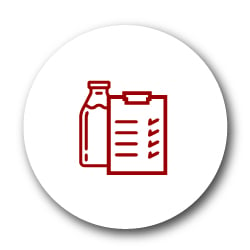
2. What type of products do you stock?
The products that your store stocks will have a direct influence on the retail shelving you choose to implement.
Special consideration should be paid to the type of display material being used in conjunction with the product.
For example, when using wooden shelving it would be ill-advised to place products with sharp, rough or protruding edges on the shelf as it could lead to scratches that will damage the finish of the wood.
In general, you should plan ahead when thinking of the logistics of shelving, as it is tedious, counterproductive and costly to continually have to replace or repair your shelving.
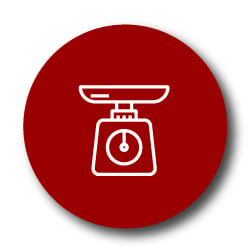
3. What is the weight of the products you intend to stock?
The weight of the products is an important factor to consider when deciding on what shelving to implement. The shelving in use needs to have the capacity to support the type of product that you intend to stock.
In terms of functionality, the shelving material chosen must be capable of withstanding the weight of the product stocked. When determining the shelf type, you should not only factor in the individual weight of the product, but also consider the collective weight of the product; as more likely than not, you will be stocking multiple amounts of your desired product to ensure that there are no empty spaces on shelf.
If you stock heavy products, it is advisable to implement steel or wooden shelving that has shorter shelves as this will provide more support. Gondola shelving units, wall units as well as end caps are recommended as they are best suited to hold large heavy merchandise. These shelving units are not only beneficial with regards to the stocking and holding of products, but furthermore, they can aid in providing the framework of how to layout your store.
Lighter products don’t need to be placed on heavy duty shelving. The best shelving to implement for lighter products is a slatwall equipped with floating shelves. This retail shelving is very similar to gondola shelving, however it is best suited for smaller and lighter merchandise.
The benefit of this shelving is that it is easy to set up and won’t take up too much space. It is also very versatile and provides easy mobility as it can either be free-standing or installed on the walls of the store.
4. What type of shelving will show off your products best?
A general guideline for the types of shelving to implement for certain products includes:
- Clothing: clothes are best paired with slatwalls, garment racks, gridwalls and tables. This is because all of these forms of display best make use of the given space in relation to the ability to effectively display the merchandise. Whilst not only being practical, they provide a stylish avenue from which you can display clothing.
- Electronic appliances: These products are best suited for slatwalls and rolling carts. This is because the shelving methodologies are able to accommodate varying sizes of products due to their functionality. These shelving’s are also easily malleable as they are not expected to carry great weights. As such, they are able to maintain functionality without having to sacrifice display capabilities.
- Canned goods, food items and household cleaning supplies: Gondola shelving is the most accommodating form of retail shelving for these particular products. This is due to the fact that they provide a wide surface area to display the products. This shelving has the ability to effectively and categorically stock varying types of products. As such, this form of shelving is often used within grocery stores.
- Alcohol: Much like the canned goods and food items, gondola shelving is recommended for displaying alcohol. As previously mentioned this form of shelving can accommodate large quantities and varying sizes of products, effectively displaying all variations of alcohol products.
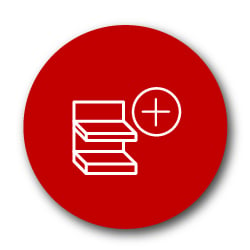
5. Will you need more shelving in the future?
When selecting the retail shelving you wish to implement, you should also consider the future.
Trends are ever-changing and as a retailer, you need to stay relevant. In the future, different products may be stocked in store which would ultimately mean the implementation of different shelving.
The shelving that you implement should be suited to your specific retail establishment and should showcase your merchandise in such a way as to not overwhelm your space availability. The goal of having a retail store is to expand and therefore it is imperative that the shelving you decide on is compatible with any expansion.
If growth of the store is anticipated then it is recommended to make use of adjustable display options as this will allow you to adapt the display according to your current inventory. It is also crucial to implement products that are versatile. If your shelving is versatile, you will be ready to accommodate a wide range of products should you want to expand or even add new departments.
Lastly, shelving that is easy to move around would be beneficial for you if you have thoughts on future expansion as it allows you to change the general layout of your store.
Conclusion
DotActiv’s all-in-one category management software will allow you to add and customise your fixtures as necessary. Visit our online store to browse a range of planogram software packages.



